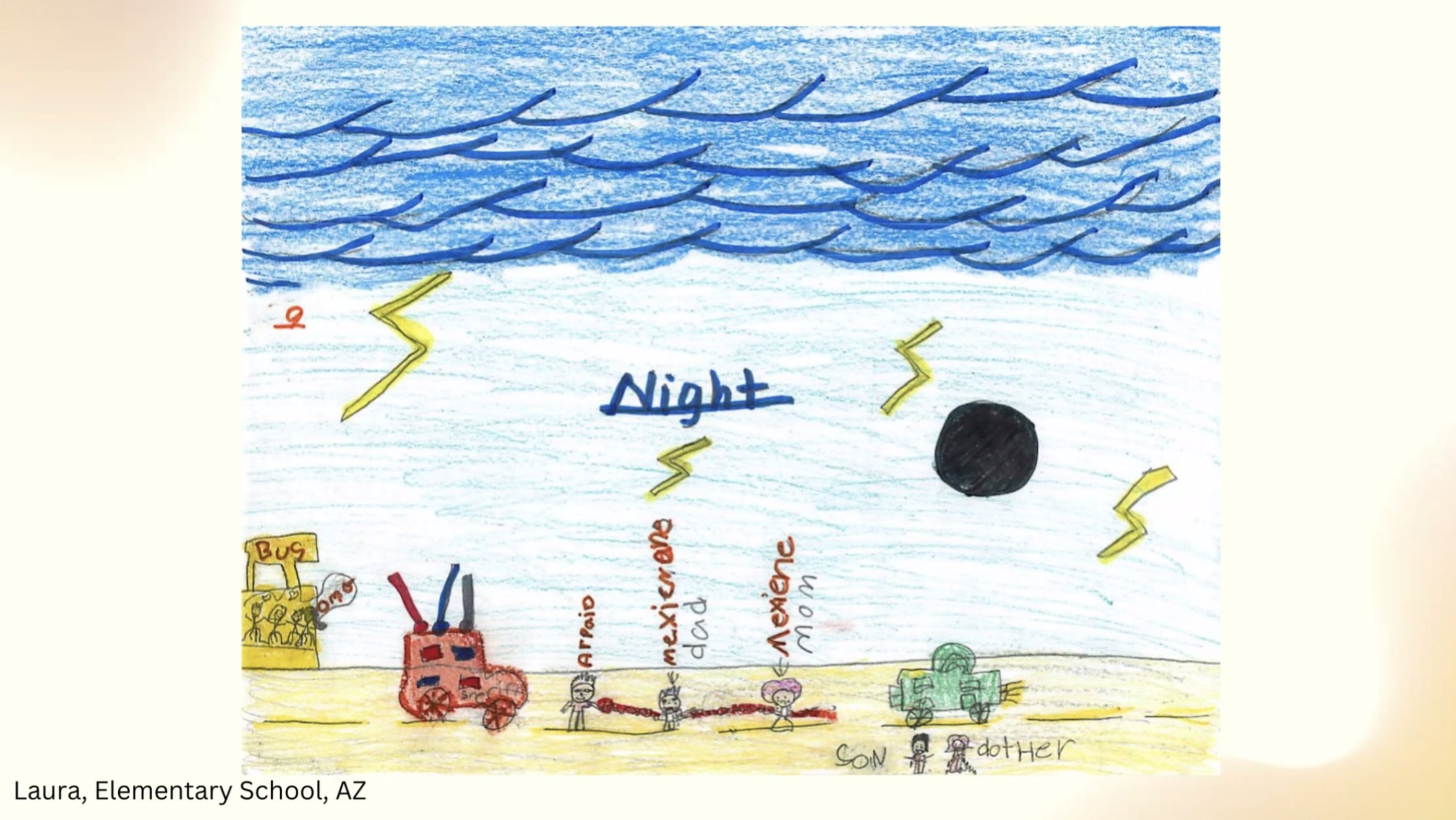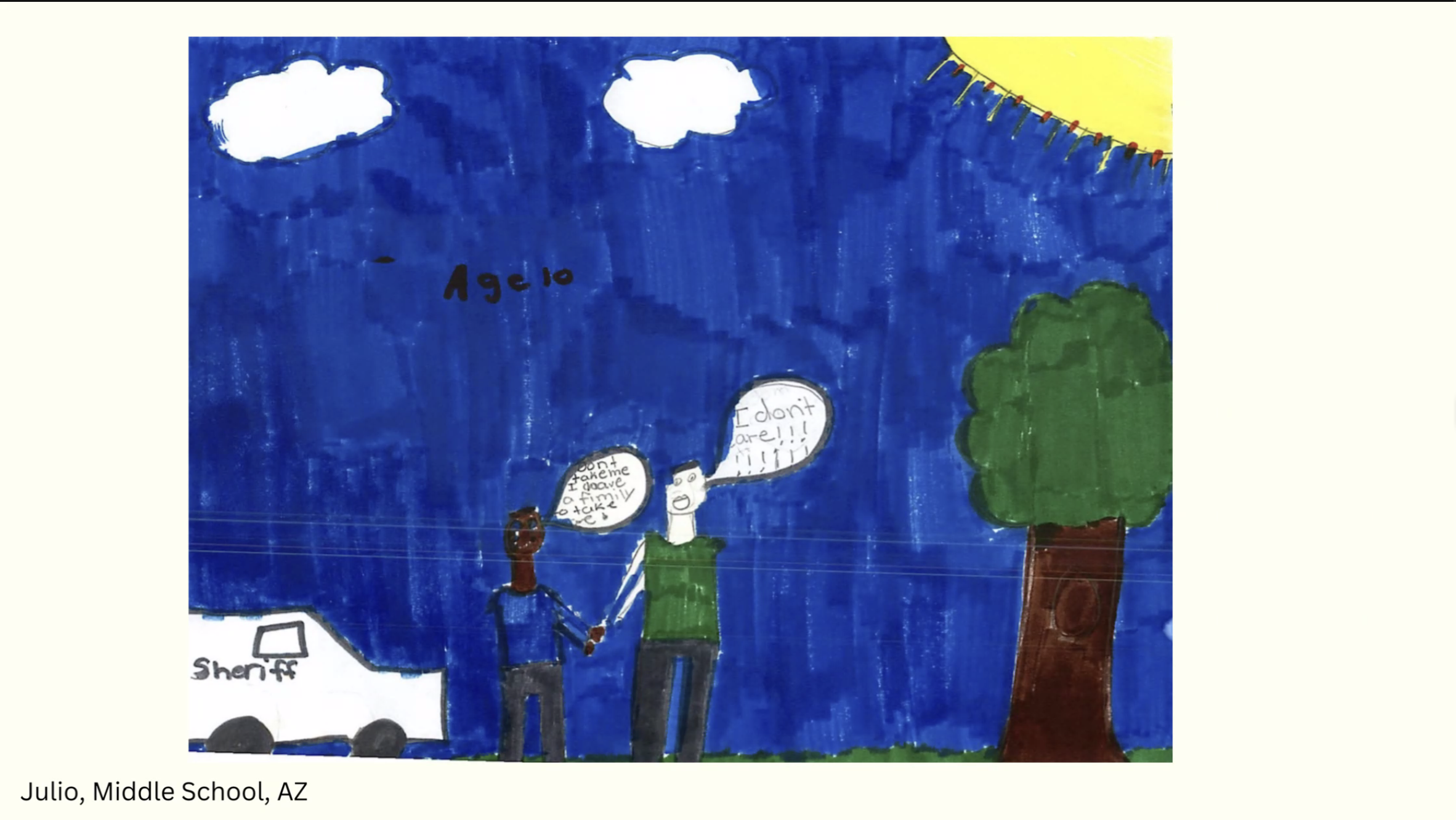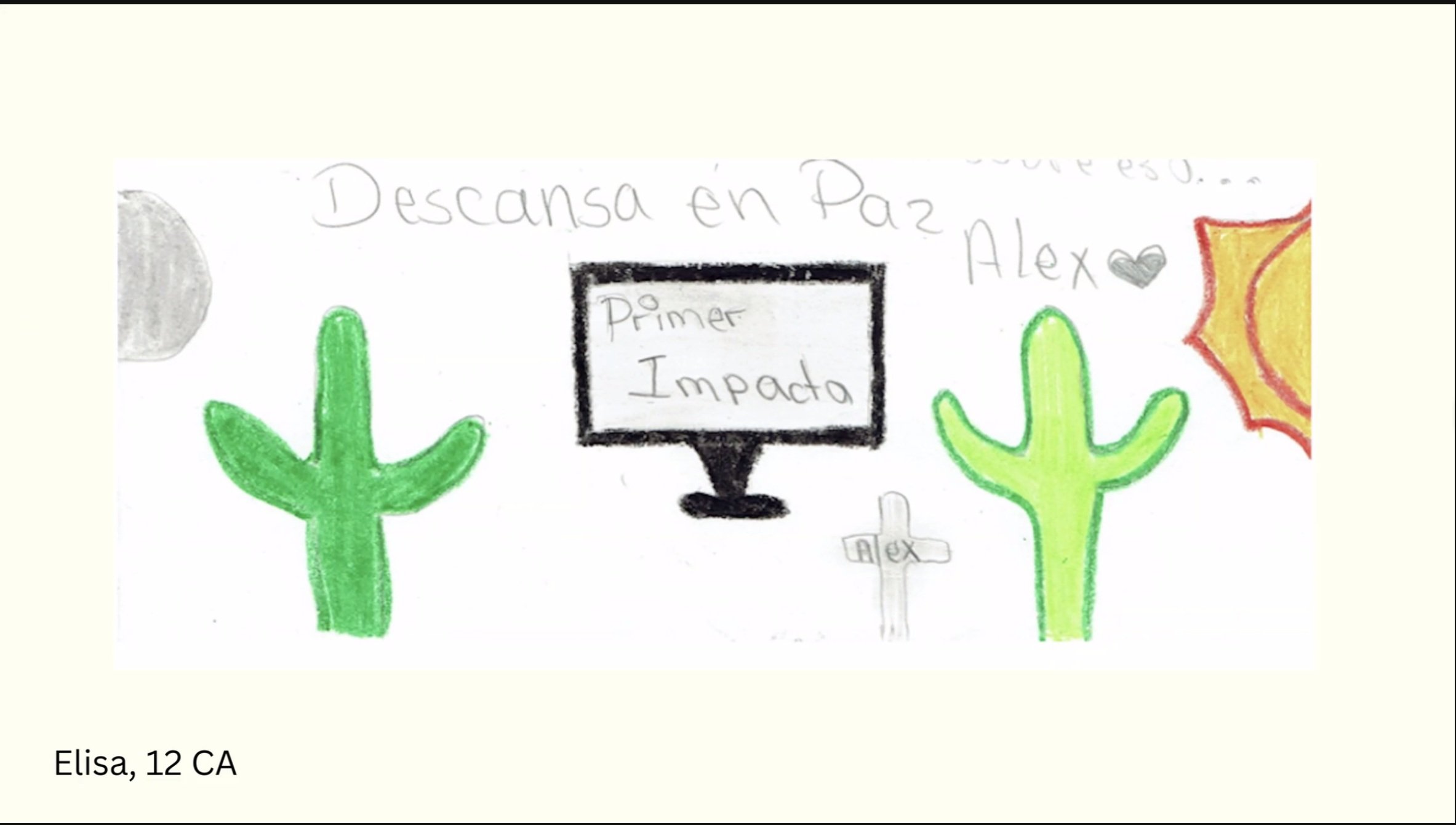By Ryan Monasch
When Silvia Rodriguez Vega asked her class of Mexican immigrant youth at an after-school art program in Arizona what they wanted to create a mural about, one student asked, “Can we do a mural about peace?” When Vega responded by asking, “What does peace look like to you?” another student raised their hand and said, “Peace looks like Sheriff Joe Arpaio shaking hands with a Mexican.”
This experience inspired Vega’s interest in working with immigrant children in the United States, to discover “how they develop personal agency to creatively respond, manage their emotions, and reimagine the dilemmas presented by anti-immigrant rhetoric and legal violence,” she told a UC Santa Barbara audience.
Community-engaged artist, writer and professor of Chicanx Studies Silvia Rodriguez Vega, during her Zoom presentation for a UCSB audience.
Vega, an assistant professor of Chicana/o Studies at UCSB, is a community-engaged artist, writer, and educator who analyzes how anti-immigration policies impact the lives of immigrant children living in the United States. She spoke about her book, “Drawing Deportation: Art and Resistance Among Immigrant Children,” at an event hosted by the Interdisciplinary Humanities Center.
Vega researches the practice of participatory art and creative expression as coping mechanisms for immigrant youth in American education systems. Her book incorporates student artwork she has collected, to explore these strategies. “Young immigrant children are not passive in the face of the challenges presented by U.S. anti-immigrant policies,” Vega said.
As an undergraduate student from 2008 to 2012, Vega worked with community youth at a local school and after-school program in Phoenix, Arizona, where she was in charge of a summer arts camp running activities with students ,such as theater skits, murals, mask making, and dance.
Vega showed the audience the drawing that she considers to be the image that pulled her into this line of work. The drawing was created by a 14-year-old named Gaby from Arizona. In Gaby’s drawing, the sun, trees, and flowers are all depressed, and a family is seen frowning, trapped inside its own home. “It was like holding a mirror to my life, and the lives of many other immigrant people,” Vega recounted.
This drawing by 14-year-old Gaby, from Arizona, inspired UCSB professor Silvia Rodriguez Vega’s career working with immigrant children through art.
When a child is given a piece of paper, she says, it is instinctual for them to draw a sun, or a stick figure with a happy face. Based on this natural inclination of children, Vega stressed that any time she saw a frown in one of her students’ drawings, she recognized that it was a purposeful thing.
This and other drawings show a response to harsh immigration policy, racism, and state violence, which she says increased with the family separation policy of the Trump administration. “This image is symbolic of the way the U.S. continues to disappear family members or take children away from their parents as a means of surveillance, coercion, and control,” Vega told her audience. “Going from literally caged childhoods as this drawing depicts, to also literally caging children in the span of just two political administrations.”
Inspired by her experiences in Arizona, Vega continued her work with immigrant children in Los Angeles from 2014 to 2018, where she partnered with the Los Angeles Unified School District and the Public Art Resource Center to create a theater class curriculum for Mexican and Central American youth, with her previous research in mind.
The Los Angeles student who played Donald Trump in a student-written play called Los Niños Inmigrantes, which means The Immigrant Children.
She taught a sixth-grade theater class bilingually in both English and Spanish and incorporated journaling, drawing, acting, and sharing as a means of processing, and coping for immigrant children. “These activities gave these children the space, time, and permission to talk about what was not to be mentioned at home. [It’s] where they turned individual pain into a moment of collective healing and support.”
Collectively, the class created a play titled “Los Niños Inmigrantes” about a young boy’s journey crossing the U.S.-Mexico border with help from a magical guide — half human, half coyote — that the students created.
Included in the performance is a satirical impersonation of then-president Donald Trump in which his yellow wig falls off when he bows. “This bright yellowish wig that the student wears juxtaposes with his brown skin, and serves as a symbol of power. The moment that the wig falls off, through humor, they’re able to take back the power, and the satire that makes fun of Trump's hair is how they mirror the dehumanization that they experience,” Vega said.
Her research findings demonstrate that while restrictive immigration laws ultimately contribute to the stress and trauma experienced by immigrant children, educators can actively make a difference for these students by incorporating art in their curriculum as an outlet for reflection and healing. Immigrant youth are not passive victims, she said, but rather active agents of their own stories.
“‘Drawing Deportation’ provides a roadmap for how art can provide a safe and necessary space for vulnerable populations to assert their humanity in a world that would rather divest them of it,” Vega said.
Please click on the photos below to view a gallery of student-made art.





Ryan Monasch is a third-year UCSB student, majoring in Film and Media Studies. She is a Web and Social Media intern for the Division of Humanities and Fine Arts.




